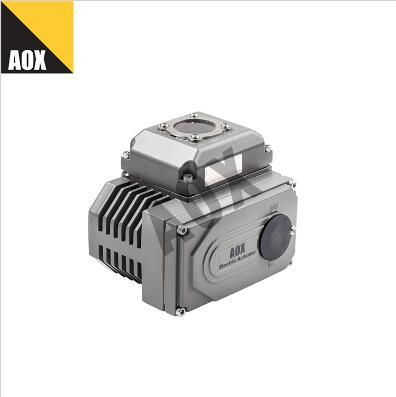Ensuring Safety in Industrial Automation: Understanding the Safety Features of the Unique Part Turn Electric Actuator
2024-03-08
Introduction:
In industrial automation, safety is of paramount importance to protect personnel, equipment, and the environment from potential hazards. The Unique Part Turn Electric Actuator, with its specialized capabilities and precise control over part-turn movements, incorporates various safety features and considerations to ensure safe operation in diverse industrial applications. In this blog post, we'll explore the safety features and considerations associated with using the Unique Part Turn Electric Actuator, highlighting its commitment to safety and reliability.
1. Overload Protection:
To prevent damage to the actuator and connected equipment, the Unique Part Turn Electric Actuator incorporates overload protection mechanisms. These mechanisms automatically limit the torque output of the actuator when excessive loads or external forces are encountered, preventing overload conditions and potential damage. Overload protection ensures safe and reliable operation, prolonging the service life of the actuator and minimizing downtime.
2. Emergency Stop Functionality:
In critical situations or emergency scenarios, the Unique Part Turn Electric Actuator features emergency stop functionality to immediately halt its operation and prevent further movement. This functionality may be activated manually using dedicated emergency stop buttons or switches located on the actuator or integrated into the control system. Emergency stop ensures rapid response to emergency situations, enhancing safety and minimizing the risk of accidents or injuries.
3. Position Limit Switches:
To prevent overtravel and ensure accurate positioning, the Unique Part Turn Electric Actuator is equipped with position limit switches that define the maximum and minimum allowable travel limits of the actuator. These limit switches are configured to automatically stop the actuator when it reaches the predefined position limits, preventing overtravel and potential damage to the actuator or connected equipment. Position limit switches enhance safety and accuracy in part-turn movements, minimizing the risk of overextension or misalignment.
4. Manual Override Capability:
In the event of power loss or control system failure, the Unique Part Turn Electric Actuator may feature manual override capability, allowing operators to manually adjust the position of the actuator using hand-operated mechanisms or tools. Manual override provides a fail-safe mechanism for maintaining control over critical processes or equipment during emergency situations, ensuring continued operation and preventing disruptions in production.
5. Compliance with Safety Standards:
The Unique Part Turn Electric Actuator is designed and manufactured to comply with relevant safety standards and regulations governing industrial automation equipment. These standards may include ISO 13849 (Safety of Machinery - Safety-Related Parts of Control Systems), IEC 61508 (Functional Safety of Electrical/Electronic/Programmable Electronic Safety-Related Systems), or local regulations such as OSHA (Occupational Safety and Health Administration) guidelines. Compliance with safety standards ensures that the actuator meets stringent safety requirements and provides a high level of protection for personnel and equipment.
6. Hazardous Area Certification:
For applications in hazardous environments where flammable gases, vapors, or dust may be present, the Unique Part Turn Electric Actuator may be certified for use in hazardous areas according to international standards such as ATEX (European Union) or NEC (National Electrical Code). Hazardous area certification ensures that the actuator is intrinsically safe and suitable for operation in potentially explosive atmospheres, minimizing the risk of ignition and ensuring compliance with safety regulations.
Conclusion:
The Unique Part Turn Electric Actuator incorporates various safety features and considerations to ensure safe and reliable operation in industrial automation applications. From overload protection and emergency stop functionality to position limit switches, manual override capability, compliance with safety standards, and hazardous area certification, the actuator prioritizes safety and reliability to protect personnel, equipment, and the environment from potential hazards. By implementing these safety features and considerations, users can mitigate risks, enhance safety, and achieve greater peace of mind in their industrial automation systems.



